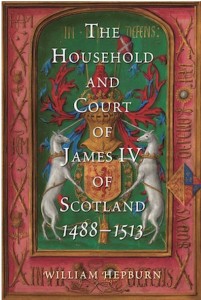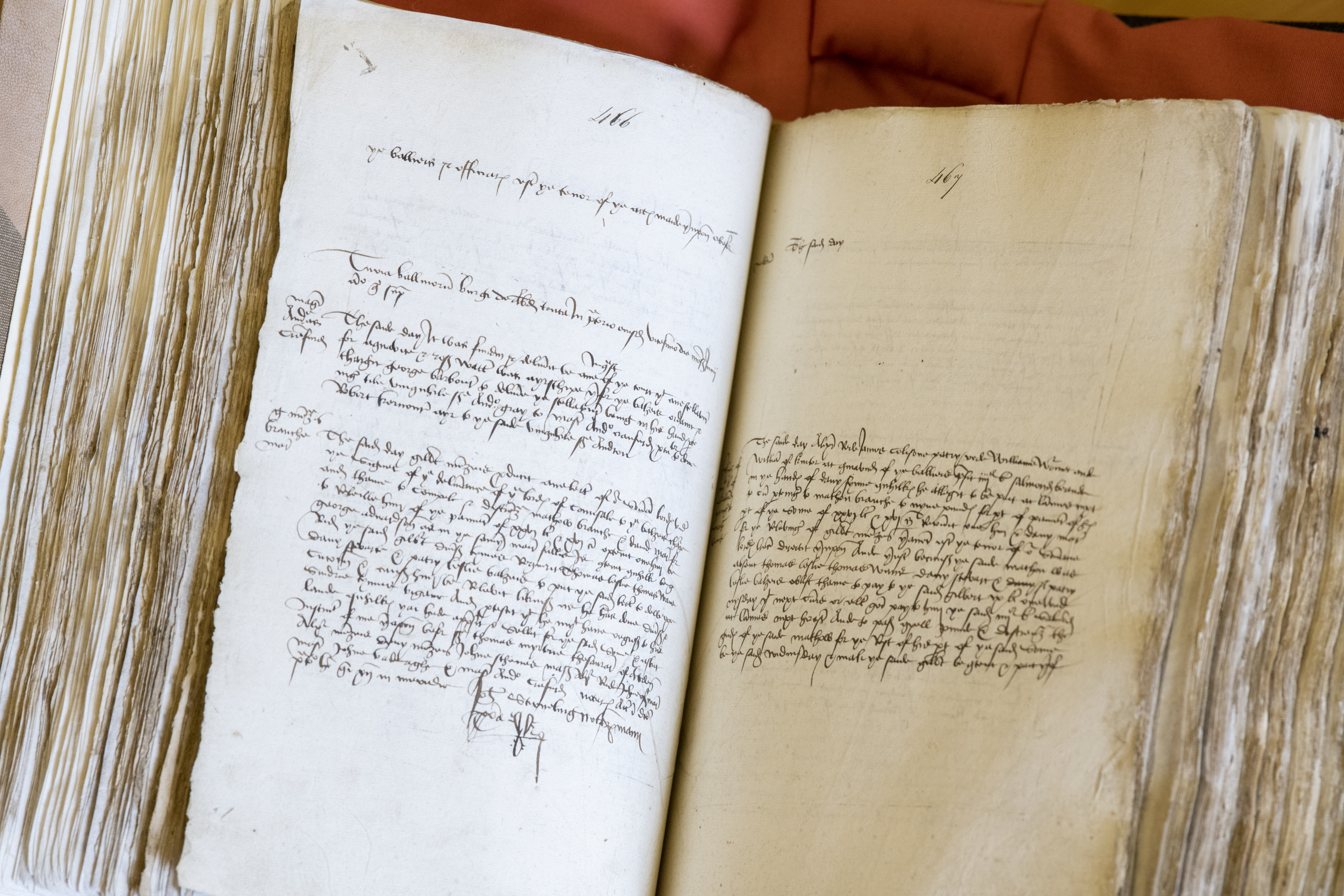
This month, The Household and Court of James IV of Scotland, 1488-1513 is published by Boydell Press, volume 4 in the Scottish Historical Review Monograph Second Series. Jackson Armstrong asked the author, FLAG Research Fellow William Hepburn, some questions about the book.
It’s really exciting to have this new contribution to our understanding of medieval and renaissance Scotland. But let’s start with the fundamentals: what is a court and is it the same thing as household?
A lot of ink has been spilt on this at least as far back as Walter Map in the twelfth century who wrote, as a courtier of Henry II, that in a ‘spirit of perplexity I may say that in the court I exist and of the court I speak, but what the court is, God knows, I know not.’ My whole book is really about trying to find an answer to this question for the court of James IV. Broadly speaking, I argue that the court is the space around the king – wherever he may be – and the people who occupy it, while the household is an institution of paid officers which organises and serves the needs of the court.
What types of sources survive to tell us about the royal court in this period?
There are many sources which have some bearing on the history of the court, but some of the key sources for the court of James IV are two sets of financial records, the treasurer’s accounts, which record a rich variety of expenditure at court, and the exchequer rolls, which record the regular revenues and expenditures of the crown. In particular, the comptroller’s accounts included within the exchequer rolls provide vital evidence of the payment of fees to individuals for service in the household. James IV’s is the first Scottish reign from which the treasurer’s and comptroller’s accounts survive in substantial numbers. It is also the first from which a household ordinance of certain Scottish origin, the 1508 bill of household, survives. These prescriptive documents describe rules for the court, in this case largely concerned with who was entitled to be at court, and receive bed and board there, and the number of servants and subordinates they were allowed to have with them. In the process it provides a snapshot of the court and its structure at a moment in time. While the records of James IV’s court are rich compared to earlier Scottish kings, some of its European contemporaries, such as the court of the Dukes of Burgundy, are far better documented.
Was the Scottish royal court similar to other princely courts in Europe?
It was. As part of a European courtly culture and society it shared many of the same influences and actively exchanged goods, personnel and ideas with the other courts of Europe, perhaps most notably when Scottish kings married women from, for instance, France, Denmark and, in James IV’s case, England, who brought with them large entourages of their compatriots. The Scottish court was, however, much smaller than the courts in the neighbouring realms of France and England. Also, every court is unique, and heavily influenced by the personality of the ruler at its core. In James IV’s case, the king’s apparently gregarious personality seems to have made his court a playful and entertaining place, even as the games and entertainments held there were freighted with status opportunities for those involved.
How significant was the reign of James IV for developments within the royal court?
The nature of the surviving Scottish sources makes it difficult to discern long-lasting institutional changes at the Scottish court equivalent to the development of the royal chamber identified at the contemporary courts of the early Tudor monarchs of England. However, James IV’s reign was looked upon as something of a golden age in the decades that followed. The court was a key feature of this depiction, most famously in the words of the poet Sir David Lyndsay of the Mount, who had been at the court of James IV and celebrated it through his poetry as a courtier of James V. The example set by James IV’s court is also found in references to it in administrative records from James V’s reign. Indeed, one of the comptroller’s accounts from James IV’s reign only survives as a copy from the reign of his son, in which it provided an example for the officers of the later king to follow.
And of course, what about burghs – how urban was the royal court and what insights do burgh records offer?
The court was wherever the king was, and the king was often in, or near, towns. One of William Dunbar’s poems is based around the apparent distaste of courtiers for Stirling, where one of the king’s chief residences was located, compared to Edinburgh, located next to another of the king’s most-used palaces at Holyrood. Even in burghs that weren’t beside a royal palace there could be much interaction between town and court. Aberdeen’s rich records provide detail about royal visits, such as the gifts offered to monarchs when they visited, and the treasurer’s accounts can round out our picture of these occasions with evidence of royal spending in Aberdeen. One royal visit to Aberdeen, by James IV’s queen Margaret Tudor, is vividly recorded in a poem written for the occasion, again by William Dunbar. It describes how the burgh and its burgesses, lavishly dressed for the occasion, honoured the queen and the monarchy more broadly using tableaux constructed along the route of the queen’s entry to the town, including scenes such as a depiction of the vaunted Scottish king of yesteryear Robert I (Robert the Bruce).
Many congratulations on the publication!
The book is available in all good bookshops and directly from Boydell & Brewer.




















